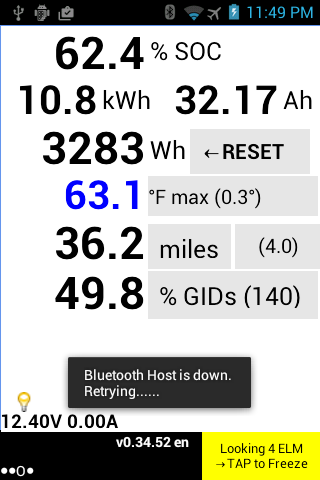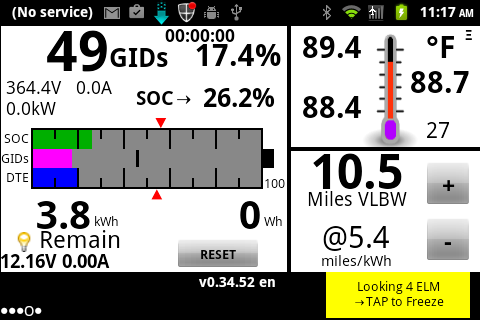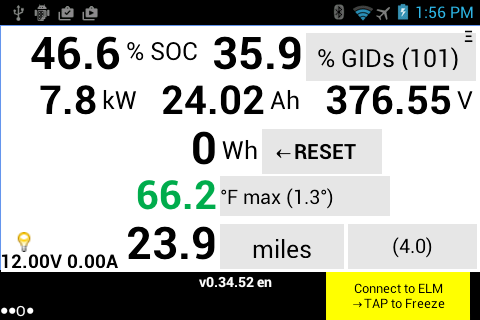TimLee said:
lorenfb said:
...Obviously one could do
the same correlation using kWhrs, but personally I find using Ahrs more meaningful data when
analyzing any battery capacity over time. Over time the Leaf's battery's output voltage will still
have the same basic values from a low to high SOC (~10-15% variation) as the battery ages,
but the Ahrs capacity will change more significantly as the battery ages, i.e. as in any application
where a battery is used over time.
...
Could you explain that further.
Both are indicative of stored energy.
I just do not understand why you consider Ahrs which is a less precise indicator that now varies in significance as the battery voltage drops with lower status of charge to be better.
I don't object to adding it, but it seems less precise than kWh :?:
What is the point :?:
1. The present nomenclature when one discusses a battery capacity is to use the term of Ahrs especially
for an automotive battery. As an example, a typical 12 volts battery has about 80 Ahrs capacity. If the
off state current of all ECUs is about 50ma, then for 1/2 capacity for good starting the no-charge
max time is about 800 hrs or 33 days.
2. You state, "Ahrs which is a less precise indicator that now varies in significance as the battery voltage drops".
Yes, it's that the Ahrs is the significant variable of energy that varies as the vehicle is driven and
and as the battery ages versus the battery voltage which varies maybe 10% from full charge to a very low
charge and over the life of the battery.
3. Typically when one loads tests a battery, it's the current that's measured for a given voltage drop.
That test is an indication of the battery's capacity and health.
4. It's the Ahrs loss which results in loss of bars and not the decline of the battery voltage.
5. Since all BEVs operate at the same voltage as is the case for the standard ICE
voltage, it's more useful to discuss battery capacities in terms of Ahrs.
6. Using Ahrs as a measure of capacity eliminates the standardization, e.g. SAE, when defining the
exact voltage value to be used when calculating BEV energy for a comparative battery analysis.
As an example, my Leaf at 13K when fully charged has about 57 Ahrs. When it was new, it had about
60 Ahrs. Now when driving, the Leaf loses its first bar at about 53-54 Ahrs. Given that, I expect that when
the Leaf reaches about 24-25K (about 53-54 Ahrs), the 12th bar will be gone. So monitoring the Ahrs
provides a more direct approach to predicting range loss. A number of forum members now relate
the loss of their first bar to a Ahrs value.






